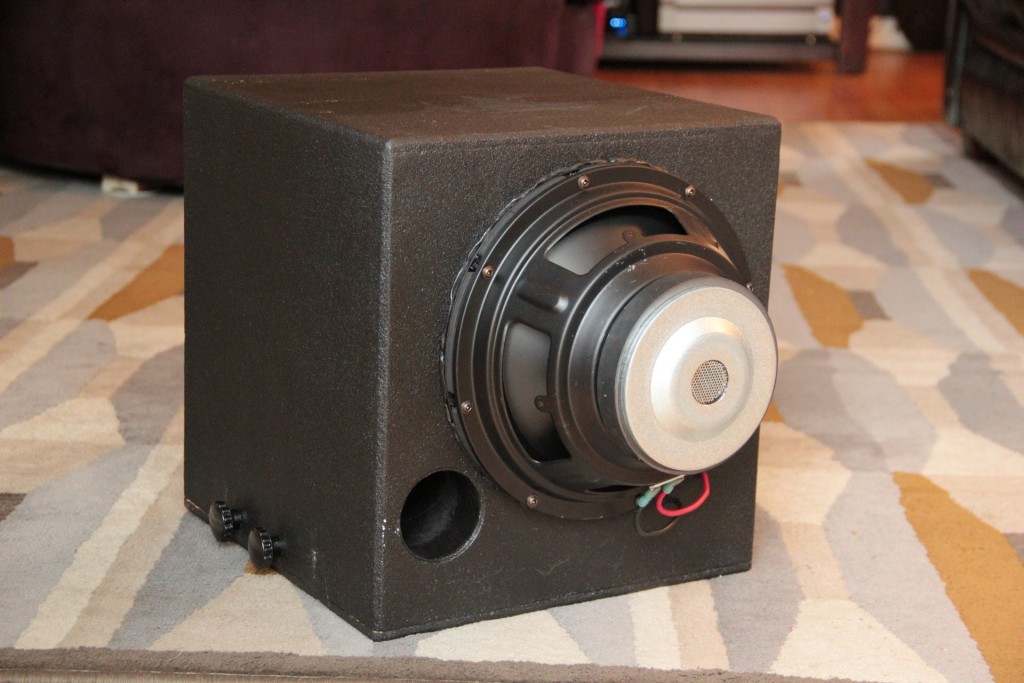
ISO El-Cheapo
Designer:
Wogg
Project Category:
Subwoofers
Project Level:
Beginner
Project Time:
1-8 Hours
Project Cost:
Under $100
Project Description:
An inexpensive Isobaric loaded subwoofer when the most bass is required for the smallest amount of money in a small enclosure. This was an upgrade for an older cabinet that had used Pyle 10” woofers. The old woofers suffered from dry rot on the surrounds and were tossed.
Design Goals:
Cheap with good bass extension fitting into the existing 1 cubic foot cabinet. In order to minimize cabinet size, the drivers are to be used isobaric loaded in a face to face clamshell mount. This arrangement allows inexpensive woofers to play deep in small spaces where a higher end, higher power woofer would usually be required.
The compromises of the existing cabinet being used were not a huge deal, as this build is targeted for the trunk of a teenager’s car, which necessitates the low cost and maximum output requirements.
Driver Selection:
The GRS 10SW-4 woofers had similar parameters to the original Pyle speakers and modeled fairly well in the small existing enclosure. And at only $20 each, allowed a re-build with only $40 in drivers.
Enclosure Design:
The existing enclosure is a simple cube 13 ¾” by 13” by 13” made from 5/8” MDF tuned to 33Hz with a 2 ½” by 11” port. The port is cut at an angle internally in order to reduce the air flow restriction, a compromise for the small cabinet.
Building a new cabinet would be recommended to increase the size and volume to 11.5 cubic feet using ¾” MDF and doubled up baffle that will recess the driver clamshell assembly and allow a 3” port cut to 15” long for reduced chuffing.
The baffle is doubled up ¾” MDF, with a 10.25” cut out on the outside piece, and a 9” cutout on the inside piece for the recess of the drivers. Apply cross bracing internally using a window brace or dowels or 1×2 lumber. The inside surfaces should be covered in egg shell foam or other thin damping material.
The resulting response in the 1 cubic foot box reaches 34Hz at -3dB with a peak between 60 and 70 Hz. This is improved with the increased volume, resulting in a 27Hz F3 and a reduced response peak around 50Hz.
Both designs allow the drivers to use all 240W of input power without over excursion and approximately 107dB peak output.
Enclosure Assembly:
Nothing special here. The original enclosure was assembled with external screws and dado joints, using wood putty to hide the screws. This was sanded a bit and cleaned up using some more putty and finished with Duratex.
Crossover Design:
What crossover, this is a subwoofer.
Tips & Tricks:
The drivers are mounted face to face directly against their gaskets. The gasketing was sufficiently thick to avoid the driver surrounds touching and ensures a clean seal with minimal air space between the cones for maximum isobaric efficiency. I used pocket screws for the mounting of the clamshell because they were the appropriate length, course thread, and color.
Conclusion:
In the 1 cubic foot design, this subwoofer does really well in an automotive installation. The combination of cabin gain, and masking of noise by way of trunk mounting really covers up the less than ideal peak in response and the chuffing from the undersized and poor clearance port.
With the larger enclosure design, this woofer would be an excellent and inexpensive general purpose subwoofer. Stand it up on 5” legs and down-fire the woofer clamshell assembly to fit it in your living room décor, unless the wife is good with the industrial looking exposed baskets.
About the Designer:
Paul Graves has been building woofers since he was a teenager with his dad and is an electronics engineer. I’ve always loved the bottom octaves of the audio spectrum and am a bass player. This is a project to help my teenager learn about the usefulness of DIY woofers for those with no money.
Project Parts List:
|
Part # |
Description |
Qty |
|
292-482 |
GRS 10SW-4 10″ Poly Cone Subwoofer 4 Ohm |
2 |

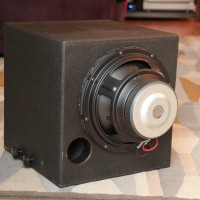
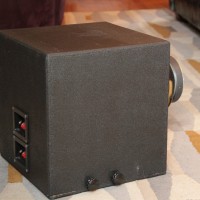
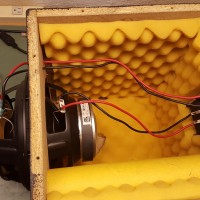
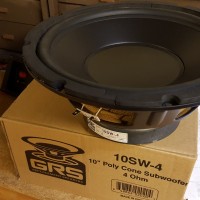
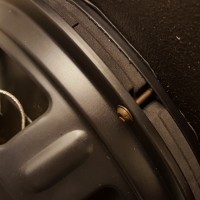
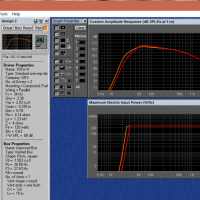
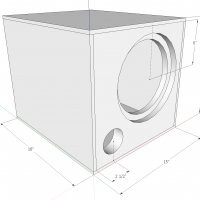
If I were to build a larger cabinet about 20″x20″x20″ I.D. out of 3/4″ plywood (which I did) and mount 2-12″ subs on opposite sides of the cabinet facing outward (which I did) and wire them out of phase with each other (which I did) and line the inside of the sealed cabinet walls with 3-1/2″ fiberglass insulation (which I did) and used a 240 watt IR remote controlled amp with adjustable frequency and gain controls, what do you think it would sound like? I’ll tell you. It sounds phenomenal with the low pass set at about 100 Hz and the gain set at about 1/4 of the way up. My question to you is, what is the advantage or disadvantage of mounting the subs face to face with each other as you did instead of mounting them facing in opposite directions and out of phase with each other? In your case I can see you already had an enclosure to work with, but in general which method do you prefer?
There’s one key difference between the ISO and what you’ve built. In your case, both speakers are radiating into the room, while the ISO only has a single cone radiating. What you’ve built is called a dipole subwoofer.
Isobaric acts as a single woofer with 1/2 the Vas specification to work in smaller boxes. A dipole woofer has out of phase sound emanating from the opposite side, which will cause acoustic cancellations based on when the waves meet back up in your airspace. Lots of folks use dipole speakers and like them, I suspect they’re more sensitive to your room and how you place them.
If you want a slightly cheaper and slightly simpler method to get a similar frequency response and SPL from a 1cu box with similar port dimensions, try it with a single Dayton SD215a-88 wired parallel/4ohm. The single $30 subwoofer reaches 107db peaks using around 80watts with an F3 of 35hz in a 1cu/28L box or an F3 of 25hz in a larger 2cu/56L box.
This does however peak earlier at only 160watts max (though it’s louder at that point compared to the ISOpair of Goldwins at 240w) and I’m assuming it could be easier to damage the single sub if you like to push a ton of watts or run low frequencies completely unrestrained at 25hz and lower. You also miss out on the fun of isobaric when going with the single sub.